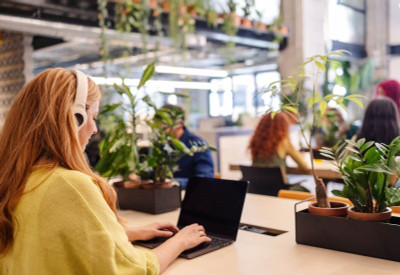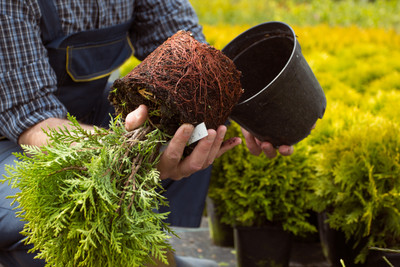The Complete Planner’s Handbook to Planter Materials
Posted by Jason Wyrwicz on Nov 25th 2025
Choosing plants is the fun part. Choosing what to put them in can feel a lot more complicated. The material you pick for your planters affects how long they last, how healthy your plants are, and how easy your containers are to move, clean, and style.
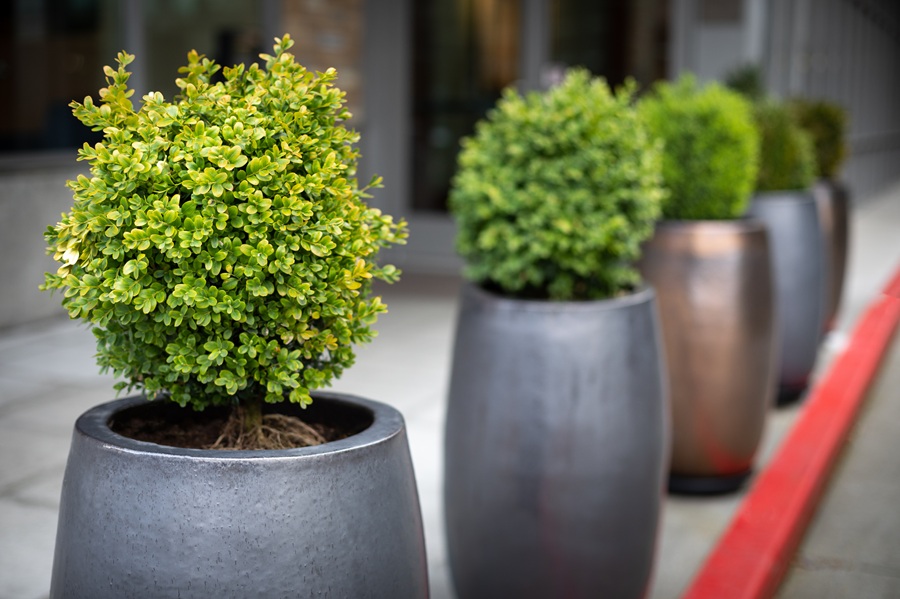
This combined guide pulls together the key points from several in depth articles to help you compare popular planter materials in one place. Whether you are designing a hotel courtyard, a restaurant patio, a retail frontage, or a corporate lobby, you will find clear pros and cons for fiberglass, metal, resin, stone, terracotta, and wood.
1. What To Consider Before You Choose a Planter Material
Before you fall in love with a particular look, run through these practical questions. The answers will usually point you toward the right material.
Durability and Climate
- Sun exposure – Will the planter sit in full sun, part shade, or indoors near a window?
- Temperature swings – Do you deal with hard freezes, snow, or intense summer heat?
- Public spaces – Will the containers be bumped by carts, luggage, or foot traffic?
Some materials crack, fade, or corrode much faster in harsh conditions. Others barely notice the weather.
Size, Weight, and Mobility
- Large planters offer better insulation for roots and can host trees or mixed plantings, but they can be extremely heavy depending on material.
- Rooftops, balconies, and decks have weight limits, so lighter materials like fiberglass and resin are often safer than stone or concrete.
- Flexible layouts call for containers you can move without special equipment.
Appearance and Brand Fit
- Do you want sleek and modern, warm and rustic, or classic and traditional?
- Are you trying to coordinate with brand colors, interior finishes, or architectural details?
- Do you prefer containers that blend in or create bold focal points?
Maintenance and Longevity
- How often can your team realistically clean, wax, seal, or repaint planters?
- Is it better for you to invest more upfront or replace containers frequently?
- Do you need vandal resistant, stain resistant surfaces for busy public areas?
2. Fiberglass Planters
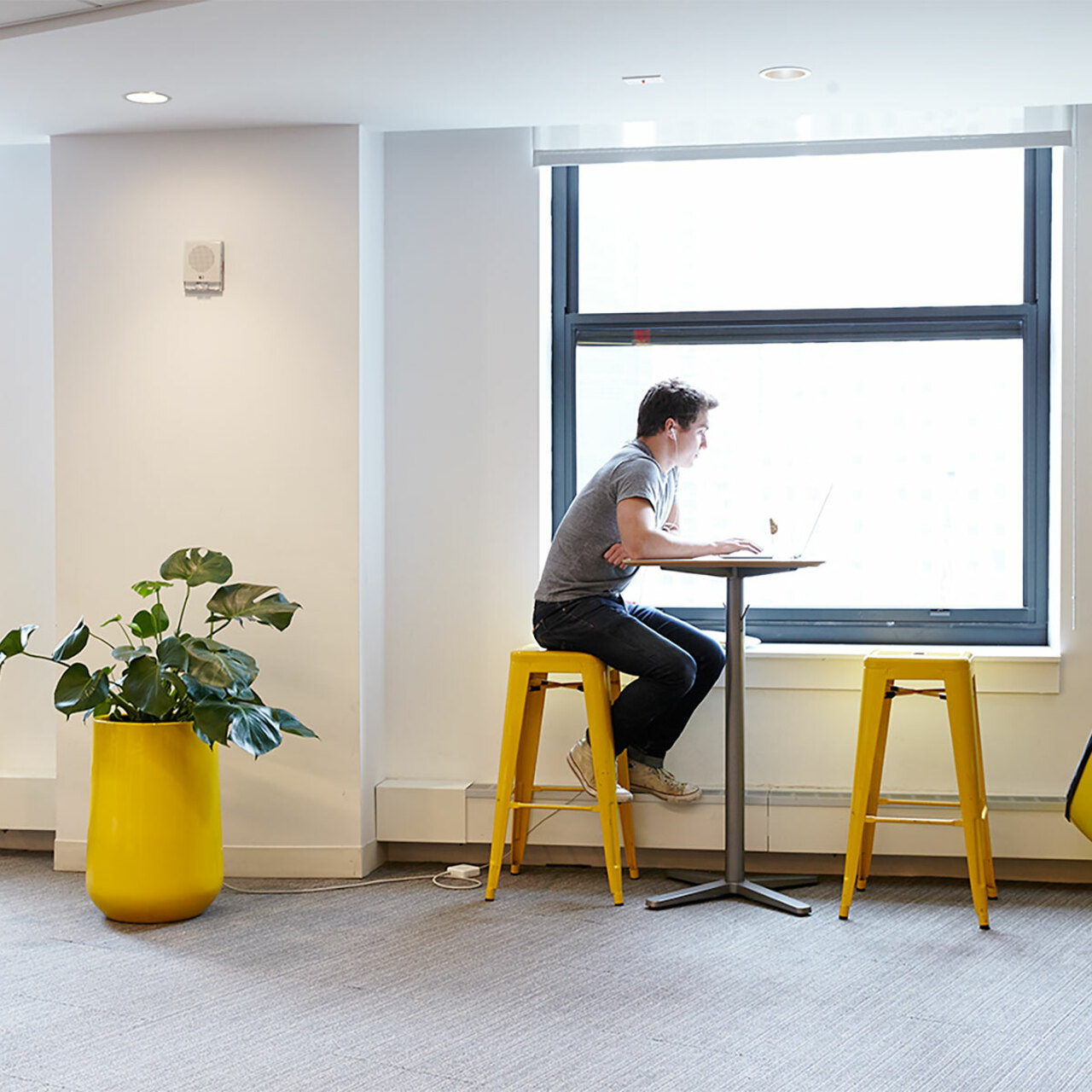
Fiberglass has quickly become one of the top choices for commercial landscaping. It is a composite of fine glass fibers and resin, built up in layers inside a mold and then finished with durable coatings. The result is a planter that is strong, light, and highly customizable.
Key Advantages
All Weather Performance
- Resists cracking and splitting in freeze and thaw cycles.
- Does not rust, rot, or warp, even in rain, snow, and intense sun.
- Non porous surface helps the soil stay moist longer and protects roots from rapid temperature changes.
Lightweight but Strong
- Much lighter than concrete, stone, or solid steel at the same size.
- Large fiberglass planters can be installed on rooftops, terraces, and balconies with less structural load.
- Staff can move them with standard equipment, so layouts can evolve with seasons and trends.
Low Maintenance
- Usually needs only an occasional wipe down with mild soap and water.
- Does not require sealing, waxing, or special treatments to stay weather resistant.
- Colors stay vivid for years when finished with high quality outdoor coatings.
Design Flexibility
- Can be molded into almost any shape – long troughs, tall columns, wide bowls, cubes, and more.
- Available in a wide range of colors, from subtle neutrals to bold brand hues.
- Can mimic the look of metal, stone, or concrete without the weight or upkeep.
Why Large Fiberglass Planters Work So Well
Large fiberglass planters are especially useful in commercial spaces. Their scale makes a strong visual statement while the low weight keeps them practical to handle.
- For entrances – Tall vases or slim rectangles frame doorways and guide guests into the building.
- For patios and roof terraces – Big planters create privacy screens, define zones, and soften hard surfaces with greenery.
- For lobbies and atriums – Oversized containers bring trees and large specimens indoors without overwhelming the floor structure.
Care and Minor Repairs
- Clean with a soft cloth or sponge and a gentle detergent.
- Avoid harsh abrasives that can scratch the protective finish.
- Small chips or scratches can usually be filled with epoxy and touch up paint, extending the life of the planter even further.
3. Metal Planters
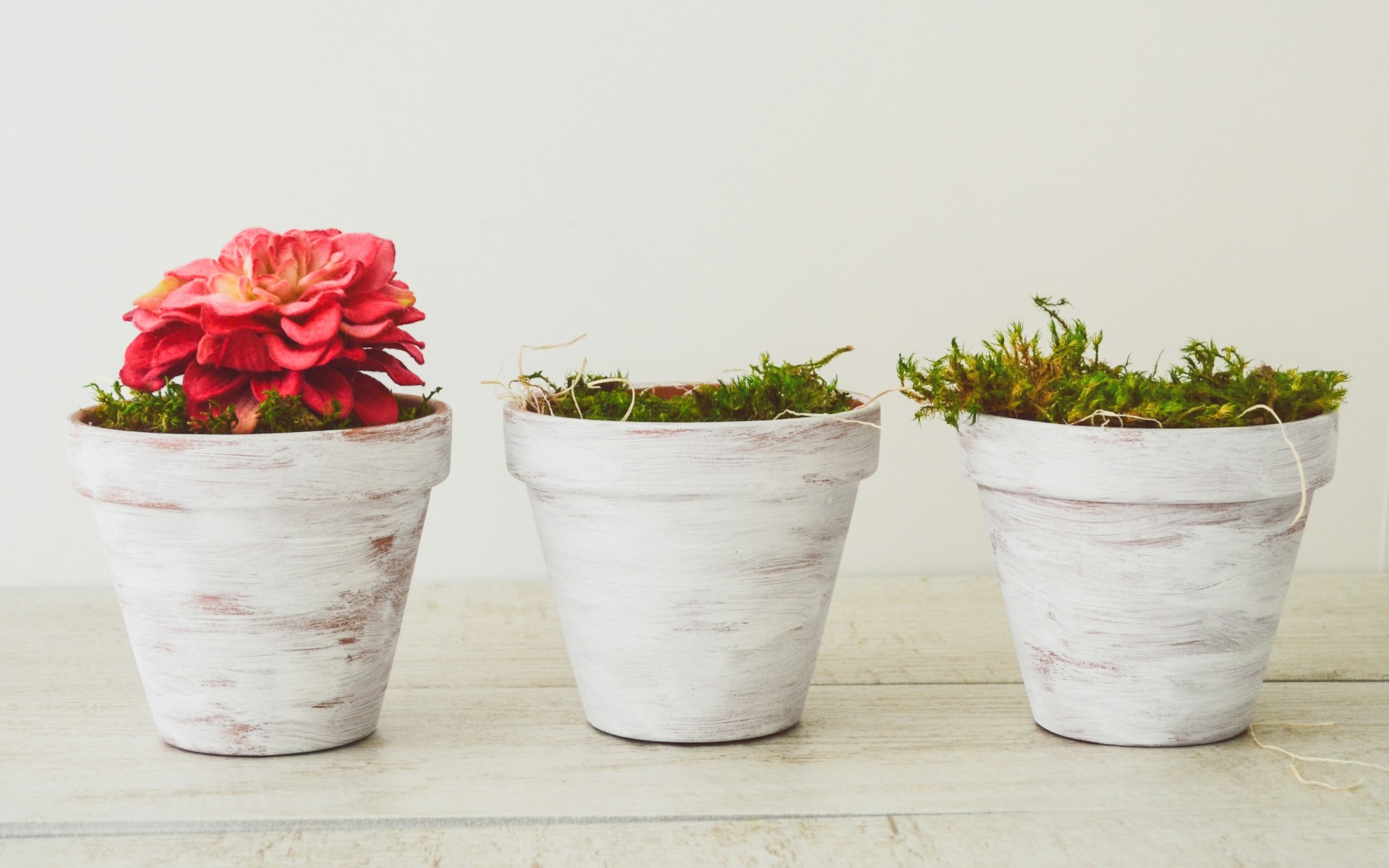
Metal planters, usually made from aluminum or steel, deliver a crisp, architectural look that suits modern buildings and high impact commercial settings.
Benefits of Metal Containers
Exceptional Durability
- High quality aluminum and steel withstand heavy use and exposure without cracking or breaking.
- Powder coated finishes help protect against corrosion and fading.
- Aluminum in particular offers impressive strength with significantly less weight than solid steel.
Clean, Contemporary Aesthetic
- Perfect for minimalist, industrial, or high tech design schemes.
- Powder coating allows for a curated palette of matte, satin, or gloss finishes.
- Custom fabrication makes it possible to match unusual proportions or tight spaces.
Simple Day To Day Care
- Most marks can be removed with a soft brush or cloth and mild soapy water.
- Avoid steel wool or harsh, acidic cleaners that can scratch or etch the surface.
- Occasional gentle cleaning keeps the finish looking fresh for many years.
Things To Watch Out For
Heat Build Up
Metal conducts heat. In strong sun, the sides of the planter can become very hot, which may dry out the soil and stress roots. To reduce the risk:
- Place metal planters where they get some shade during the hottest parts of the day.
- Use a plastic liner, clay insert, or insulating barrier inside the container.
- Choose plants that naturally thrive in hot, dry conditions, such as succulents, cacti, or Mediterranean herbs.
Weight of Large Sizes
Small metal planters are easy to move. Larger sizes, especially in steel, can become very heavy. That makes them best suited to permanent or semi permanent installations at ground level, or in places where structural load is not a concern.
4. Resin and Plastic Planters

Resin is often grouped with “plastic,” but genuine resin is an organic compound that can be blended and molded into strong, lightweight forms. Modern resin planters are popular where cost, portability, and impact resistance are top priorities.
Why Resin Can Be Great For Plants
Handles Extreme Weather
- Resin is flexible enough to expand and contract as temperatures rise and fall.
- Resists cracking when soil freezes and thaws inside the pot.
- Stands up well to bumps, scuffs, and everyday wear around public spaces.
Non Porous and Easy To Clean
- Because resin does not absorb moisture, stains stay on the surface instead of sinking in.
- Most dirt, bird droppings, or graffiti can be washed away with warm water and mild soap.
- This makes resin a smart choice for streetscapes, school grounds, or busy retail environments.
Mimics Other Materials
- Can convincingly imitate terracotta, stone, concrete, or ceramic textures.
- Available in an extremely wide range of shapes and styles, from classic urns to sleek cubes.
- Lightweight construction keeps shipping and installation costs lower, especially when ordering in bulk.
Points To Consider With Resin
- Cheaper, low quality plastics may fade or become brittle faster than premium materials.
- Very light planters can tip in strong winds unless they are large, well filled, or weighted.
- For long term commercial installations, many designers use resin for smaller accents and lean on fiberglass or metal for their main statement pieces.
5. Stone, Concrete, Terracotta, and Wood
Traditional materials still have a place, especially when a specific look is required, but they come with trade offs.
Stone and Concrete
- Pros – Classic appearance, excellent stability, very resistant to accidental bumps or theft, and naturally insulating for roots.
- Cons – Extremely heavy, expensive to ship and install, difficult or impossible to move once in place, and prone to cracking in freeze and thaw cycles if not properly designed.
- Best for – Ground level courtyards, heritage properties, and permanent installations where weight is not an issue.
Terracotta
- Pros – Warm, earthy look and attractive patina as it ages.
- Cons – Highly porous, so soil dries out quickly and pots are vulnerable to cracking in cold climates.
- Best for – Mild climates, covered patios, or decorative indoor displays where regular watering is easy.
Wood
- Pros – Natural texture, good insulation for roots, and strong rustic appeal.
- Cons – Requires regular sealing or staining to prevent rot and warping, and may eventually decay even with good care.
- Best for – Designs that prioritize a natural or coastal look and where ongoing maintenance is acceptable.
6. Quick Comparison: Fiberglass vs Metal vs Resin
| Material | Durability | Weight | Maintenance | Best Uses |
|---|---|---|---|---|
| Fiberglass | Excellent in most climates, resists cracking and fading. | Light to moderate, even in very large sizes. | Very low – simple cleaning is usually enough. | Commercial sites, rooftops, balconies, large statement planters indoors and out. |
| Metal (Aluminum / Steel) | Extremely strong, long lasting when properly finished. | Moderate to heavy, especially in larger dimensions. | Low – gentle cleaning, occasional extra care for finishes. | Modern facades, restaurant patios, plazas, and spaces that need a bold, architectural feel. |
| Resin / Plastic | Good, especially for impact resistance and weather flexibility. | Light, easy to move and ship. | Very low – quick wash restores the surface. | Retail displays, temporary layouts, bulk orders, and sites needing affordable, lightweight planters. |
7. Matching Planter Material To Your Space
For High Traffic Commercial Entrances
- Use fiberglass or metal in large, stable shapes that will not tip easily.
- Choose finishes that coordinate with signage, doors, and facade materials.
For Rooftop Gardens and Balconies
- Prioritize lightweight fiberglass or resin to stay within structural limits.
- Mix tall privacy planters with low bowls or boxes to create layers without unnecessary weight.
For Restaurant Patios and Cafés
- Use long rectangular fiberglass or metal planters to define dining zones and provide wind protection.
- Add a few colorful resin planters as accents that can be rearranged for events or seasonal refreshes.
For Interior Lobbies and Office Spaces
- Fiberglass is often the easiest material to keep looking pristine indoors.
- Choose sleek finishes for contemporary offices or textured, stone like looks for more traditional interiors.
8. General Care Tips For Long Lasting Planters
- Provide drainage – Make sure every planter has adequate drainage holes and a suitable liner or base layer so roots do not sit in water.
- Protect surfaces – Use saucers, risers, or pads under planters to prevent staining patios, decking, or interior floors.
- Clean regularly – Wipe away dirt, pollen, and spills before they have time to stain or degrade the finish.
- Check each season – Inspect for chips, cracks, or corrosion and address small issues quickly to extend the life of the container.
9. Choosing The Right Planter Material For Your Next Project
If you need maximum durability, low maintenance, and design flexibility in commercial settings, fiberglass planters often sit in the sweet spot between performance and style. Metal containers add a bold, contemporary edge where heat and weight are manageable. Resin offers budget friendly versatility and plenty of room to experiment with shapes and finishes.
Use this guide as a starting checklist, then refine your choices based on climate, building type, and how often you expect to update your layout. With the right mix of planter materials, your plants will thrive and your space will look polished season after season.

